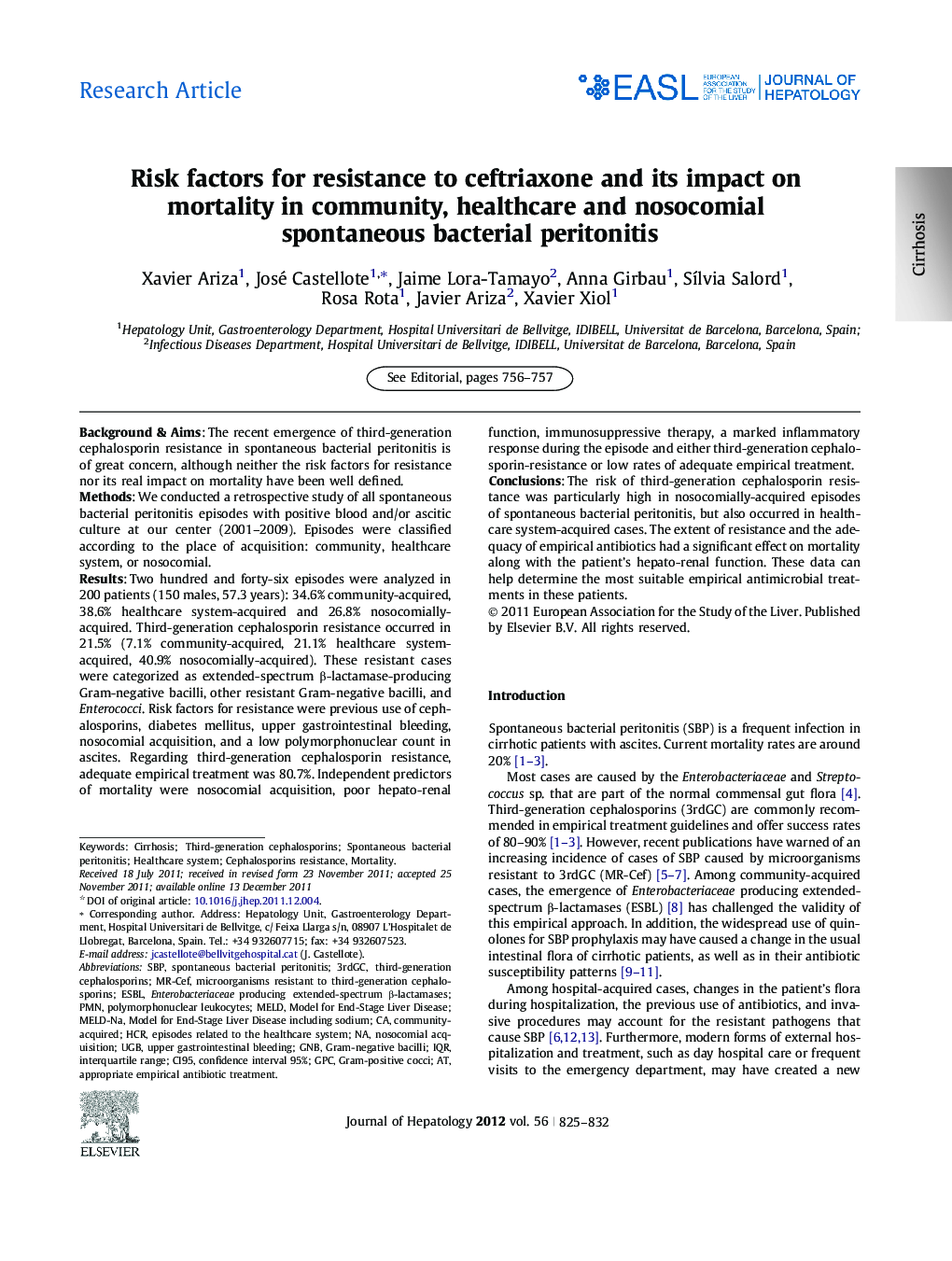| Article ID | Journal | Published Year | Pages | File Type |
|---|---|---|---|---|
| 6107594 | Journal of Hepatology | 2012 | 8 Pages |
Background & AimsThe recent emergence of third-generation cephalosporin resistance in spontaneous bacterial peritonitis is of great concern, although neither the risk factors for resistance nor its real impact on mortality have been well defined.MethodsWe conducted a retrospective study of all spontaneous bacterial peritonitis episodes with positive blood and/or ascitic culture at our center (2001-2009). Episodes were classified according to the place of acquisition: community, healthcare system, or nosocomial.ResultsTwo hundred and forty-six episodes were analyzed in 200 patients (150 males, 57.3 years): 34.6% community-acquired, 38.6% healthcare system-acquired, and 26.8% nosocomially-acquired. Third-generation cephalosporin resistance occurred in 21.5% (7.1% community-acquired, 21.1% healthcare system-acquired, 40.9% nosocomially-acquired). These resistant cases were categorized as extended-spectrum β-lactamase-producing Gram-negative bacilli, other resistant Gram-negative bacilli, and Enterococci. Risk factors for resistance were previous use of cephalosporins, diabetes mellitus, upper gastrointestinal bleeding, nosocomial acquisition, and a low polymorphonuclear count in ascites. Regarding third-generation cephalosporin resistance, adequate empirical treatment was 80.7%. Independent predictors of mortality were nosocomial acquisition, poor hepato-renal function, immunosuppressive therapy, a marked inflammatory response during the episode and either third-generation cephalosporin-resistance or low rates of adequate empirical treatment.ConclusionsThe risk of third-generation cephalosporin resistance was particularly high in nosocomially-acquired episodes of spontaneous bacterial peritonitis, but also occurred in healthcare system-acquired cases. The extent of resistance and the adequacy of empirical antibiotics had a significant effect on mortality along with the patient's hepato-renal function. These data can help determine the most suitable empirical antimicrobial treatments in these patients.
